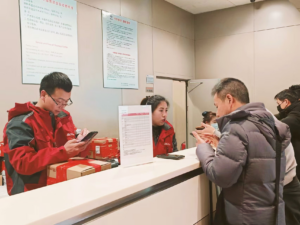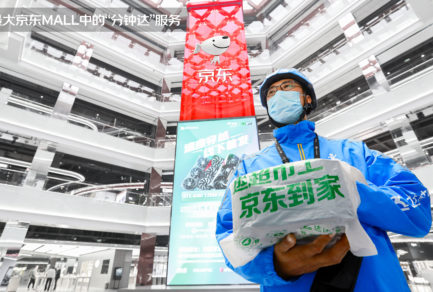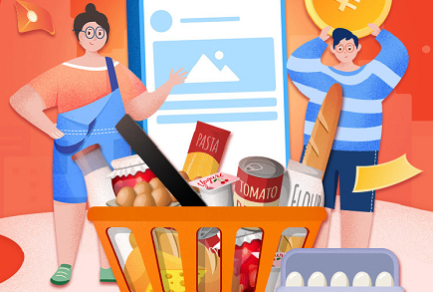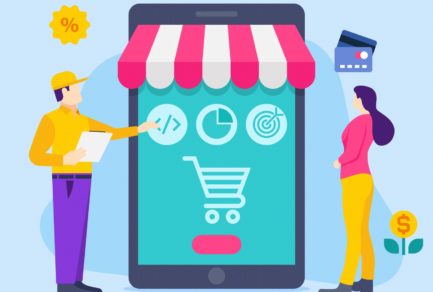Sep 29, 2020|
In-depth Report: JD Digits: Delivering Trust through Blockchain Technology
by Ella Kidron
JD is in the fifth year of its journey in the exploration and application of blockchain technology. The company was a pioneer in blockchain technology applications in China, with three goals in mind: transparency which would improve the consumer experience by increasing trust, as well as how to both improve the efficiency and reduce the cost of this trust. Later, JD’s blockchain business was transferred to JD Digits, the leading digital technology company which has its roots in JD.com
“The basic infrastructure for JD’s blockchain system has been formed. Now we are focused on using blockchain as a service (BaaS) to create technical value for retail internally and to empower external parties, and continue to generate revenue from technology services,” explained Larry Zhai (翟欣磊), who is responsible for blockchain at JD Digits.
JD’s Larry Zhai shares some insights on development of blockchain over a coffee
Blockchain, the “buzzword” that keeps on buzzing
In recent years, blockchain has become highly popular as a means of improving consumer trust because of the undeniable transparency it provides. A survey from ROI found that 78% of consumers trust transparent brands more than those that don’t offer visibility into their supply chains. In addition, 86% of millennial moms are more likely to pay more for a product that offers complete transparency.
Furthermore, in an article for Harvard Business Review (HBR), Alexis Bateman, director of MIT Sustainable Supply Chains, and Leonardo Bonanni, founder and CEO of Sourcemap, wrote that the concept of supply chain transparency was “virtually unknown” 15 years ago. Today, however, companies are under pressure from governments, consumers, NGOs, and other stakeholders to divulge more information about their supply chains, and the reputational cost of failing to meet these demands can be high. At the same time, researchers at MIT Sloan School of Management found that consumers may be willing to pay 2% to 10% more for products from companies that provide greater supply chain transparency. Blockchain’s inherent benefits make it particularly suitable for providing this type of transparency in the upstream and downstream of the supply chain, and JD’s supply chain advantages, mean a lot of potential applications for the technology in many different sectors.
“JD is a supply chain infrastructure-based company, so if you want to do supply chain technology, JD is the place to be,” said Zhai.
The genesis of JD Blockchain
In 2015, with the support of the Linux Foundation, IBM and other contributors, Hyperledger, an open source blockchain community focused on developing a suite of stable frameworks, tools and libraries for enterprise-grade blockchain deployments came into being. However, it wasn’t really until 2016 that the value of blockchain started being recognized globally. Thousands of blockchain enterprises started springing up, and enterprises and services started to realize scale.
This was not lost on JD founder and CEO Richard Liu, who devised a plan to get in on the action. In November 2016, the JD-Y business unit, which is devoted to supply chain innovation, particularly in the retail space, was officially created, and with it, the JD Blockchain team was also formed.
“JD Logistics’ high speed fulfillment and precision have deeply influenced JD’s technology development,” Zhai explained. “As such, JD’s technology implementation ability is very strong. In 2016, the company had been listed for not even two years, and had a lot of resources [to explore new projects.] Technology talent started recognizing the JD brand more enthusiastically, and the company as a place to do innovation,” he commented.
Starting with food safety and product supply transparency
In 2016, Walmart, IBM, an important contributor to hyperledger, and Tsinghua University had released news of a collaboration to improve the way food is tracked, transported and sold to consumers across China via blockchain. Digital currency applications of blockchain started in 2008, and up until 2016, 80-90% of the blockchain market was still digital currency. IBM had started to focus on blockchain applications for enterprise-level supply chain. As JD has a strong supply chain and is a supply-chain based company, it was decided that JD’s blockchain should revolve around supply chain. From that time, JD began looking into practical and commercial applications of blockchain in retail to link the physical and digital worlds. “JD already had the digitized scenarios, layout and logistics in the physical world to do this mapping,” said Zhai.
JD announced the establishment of JD Tracing and Counterfeit Alliance in June 2017, aimed at putting data from important steps in the production process online and tamperproof through blockchain. A host of information, including origin and the entire production process is displayed to consumers through the scanning of a QR code, enhancing the persuasive power of brands and encouraging purchase loyalty. JD’s blockchain traceability platform has already partnered with over 1,000 brands and merchants, accumulated more than one billion pieces of commodity data, and responded to more than 7.5 million consumer traceability requests. Scenarios covered include fresh good, maternal and infant, alcohol, makeup, super market and convenience store and more. “JD mainly covers food safety-related, high value and long supply chain [such as cross-border] products,” Zhai commented.
From application to infrastructure
Starting in 2018 JD began developing its own blockchain infrastructure called JD Chain. It was released as an open platform in April 2019. “If we rely solely on international open source technologies, we lose our [advantageous] position, so in addition to applications, we also have to develop our own underlying core technology.”
Blockchain is not a mysterious high barrier to entry technology, but rather a collection of pre-existing computing technologies, such as cryptography, peer-to-peer transmission, consensus, distributed storage and more. “The core [value] of blockchain is to verify the authenticity of data involving many parties, and turn that data into vouchers that can be priced so that data can flow. If blockchain wants to perform well, it needs to be combined with application scenarios, constantly expand network scale and have more people use it.”
An early example of JD’s blockchain application is the Running Chicken project. Through the project, JD helps farmers in Wuyi County in Hebei province raise free-range chickens. To ensure that the chicken takes enough steps, JD fits each chicken with a specially designed pedometer, with the aim of having each bird take one million steps during the rearing process. The company uses blockchain technology for maximum quality assurance and full traceability. Since early 2018, JD customers have been able to review details about the rearing process for every chicken they buy. A scan of the QR code on the poultry’s packaging allows buyers to view detailed information on sourcing, feeding intervals and more. The chickens are delivered via JD’s self-operated logistics network.

JD’s Running Chicken project
“Technology needs to resolve issues related to user experience, cost and efficiency,” said Zhai. “When we first started the Running Chicken project, the network at the breeding farm was behind the times, so we researched an offline operating system.” He explained that, for example, when the code on the chicken’s pedometer and the source information needed to be linked, it was possible there was no internet, so they implemented a PDA system to upload the data. The project is also intended to improve the economic situations of those involved. “When we are doing anything with technology, we need to pay attention to how to help [farmers] sell at a better price, or to resolve production efficiency and cost issues. On the user side, if customers think the product is of good quality, they are willing to pay more for it.”
In another project, JD cooperated with Xinyulong, a sea cucumber enterprise in Dalian, Liaoning province. Sea cucumbers are considered to be a nutritional delicacy in China, and as such, quality control needs to be strictly managed. Xinyulong recognized the importance of ensuring QC in the upstream and downstream of the supply chain. All of its products have been added to JD’s platform, and a video system set up at different stages of the breeding and production process guarantees consistency of quality. By working with JD to implement blockchain into their own enterprise and supply chain, Xinyulong is also pushing transparency in the whole industry. Furthermore, on the consumer end, the transparency can increase their willingness to buy.

Xinyulong Sea Cucumber Factory in Dalian, Liaoning province
Expanding the universe of blockchain applications
JD’s blockchain technology has already been applied in many industries, such as retail, supply chain, digital finance, digital deposit, and electronic licensing. For example, the technology has been implemented in paperless signing of logistics documents, electronic VAT invoices and more. Through paperless logistics, JD is able to save nearly RMB 400 million yuan in costs and reduce paper by more than 5,000 tons.
Relying on blockchain digital certificate technology, JD Chain’s cloud contract signing platform provides a complete and secure online contract signing solution, E-Sign. Blockchain is used to record the entire process, including real name authentication, digital certificate acquisition, data generation, signature and transmission, which ensures the reliability of the contract. Furthermore, to help more small and medium-sized enterprises who may not have blockchain capabilities of their own enjoy the convenience of blockchain e-contract services during the epidemic, JD Chain also launched a support plan for them to enjoy free services until the end of 2020. The service is available at https://esign.jd.com.
Another way to expand the universe of blockchain application is though combination with other technologies. Zhai explained that there is a very natural relationship between blockchain and cloud as cloud makes it less expensive to implement blockchain. At the same time, IoT and blockchain are connectivity technologies; IoT is about collection and blockchain is about connection. Finally, AI is about data calculation and computation. If blockchain is able to link more data, then cloud and AI can be used to analyze it more accurately.
The team now spends a lot of time on business development. From 2016 to 2019, China’s blockchain market began to acknowledge the importance of enterprise blockchain services and explore a model system. Now it is time to focus on the commercialization of enterprise blockchain services.


 This Harbin tourism boom has also spurred a surge in sales of winter apparel. JD.com’s data indicates a rapid growth in the sales of warm clothing items such as down jackets, snow boots, and thermal underwear between January 1st and 7th. The sales growth is especially pronounced in southern provinces and cities such as Jiangsu, Zhejiang, Guangdong, Sichuan, and Shanghai. Notably, tall snow boots registered a 206% year-on-year increase in transactions, while padded cotton caps and thickened long down jackets soared by 158% and 134%, respectively. Beyond clothing, travel gear has also seen a considerable uptick, with a 98% year-on-year growth in transactions for large suitcases and travel backpacks in these southern regions.
This Harbin tourism boom has also spurred a surge in sales of winter apparel. JD.com’s data indicates a rapid growth in the sales of warm clothing items such as down jackets, snow boots, and thermal underwear between January 1st and 7th. The sales growth is especially pronounced in southern provinces and cities such as Jiangsu, Zhejiang, Guangdong, Sichuan, and Shanghai. Notably, tall snow boots registered a 206% year-on-year increase in transactions, while padded cotton caps and thickened long down jackets soared by 158% and 134%, respectively. Beyond clothing, travel gear has also seen a considerable uptick, with a 98% year-on-year growth in transactions for large suitcases and travel backpacks in these southern regions.
 JD to Auction Memorabilia from Anti-COVID Fight for Charity
JD to Auction Memorabilia from Anti-COVID Fight for Charity



